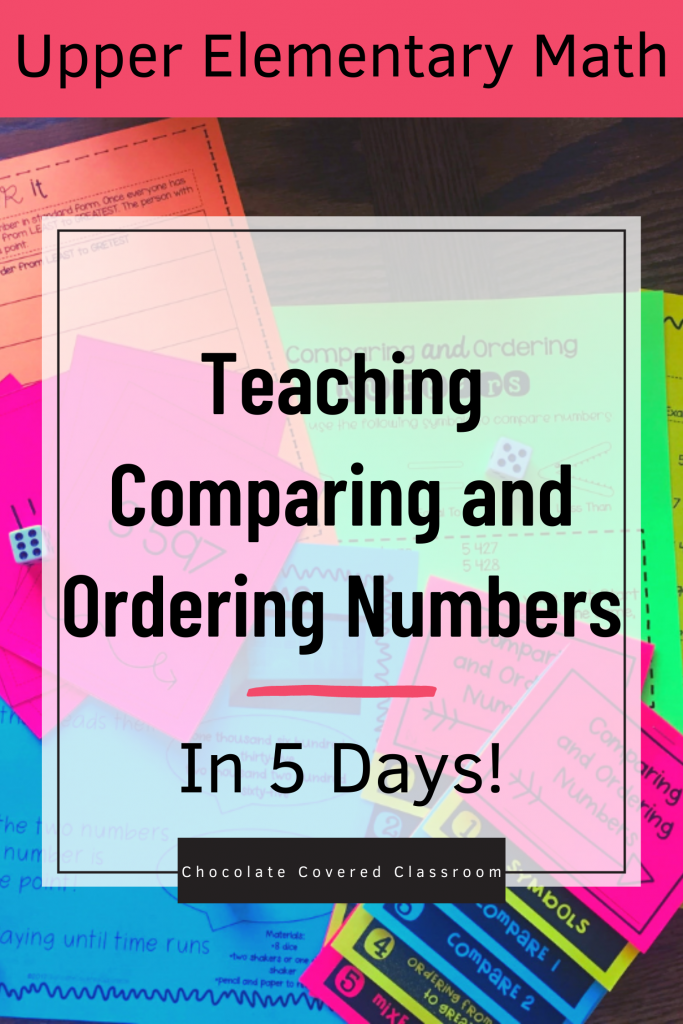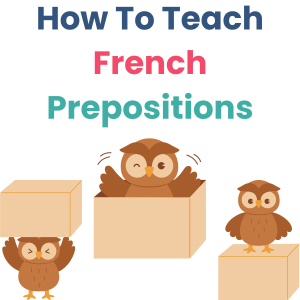Are you an upper elementary teacher looking for engaging ways to teach big kids about comparing and ordering numbers? This blog post outlines easy to implement strategies for teaching grade 4 and grade 5 students ways to compare large numbers.
Day 1: Introduce the math concept with a PowerPoint Presentation




Teaching Tip: I LOVE having students use personal whiteboards during introductory lessons. They are SO MUCH more willing to try out new things and make mistakes if they know that they can simply swipe that error away.

Days 2, 3 and 4: Math Workshop
Activity 1:
Whole Group Warm Up (10-20 minutes)
This fun game will help your students to practice ordering numbers. I like to use this as a warmup.
Every student needs a card that has a number on it. Explain to students that you are going to set a stopwatch to time how long it takes them to put themselves in order from LEAST to GREATEST based on the card that they received.

Encourage students to explain their reasoning when trying to find their spot in the line.
Once students are in the correct order, mix up the cards and play again. This round students are trying to beat their previous time.

Activity 2:
Station Rotations (40- 50 minutes) – I like to give each group between 20-25 minutes at each station)
Day 5: Review and Assessment
Day 5 is for summative assessment. I like to give a short and sweet 2 page check in to ensure that all of the kiddos fully understand the concept of comparing and ordering numbers.

What centers can I use for teaching Comparing and Ordering Numbers?
1) Teacher Time
I suggest starting each teacher time rotation with a quick formative assessment. This will allow you to see where the kids are at with the concept.
Here is a possible assessment question:
Order the following numbers from GREATEST to LEAST. 5 672, 5 627, 5 726
Differentiation: You could make this question easier by asking students to order 726, 672 and 627. You could make this question more difficult by turning the numbers into decimals. Students could compare 5.72, 5.67 and 6.62.
The next thing that I do is go over the anchor chart with students. This helps them to remember what was taught during the whole group lesson.

Next we start working through the different problems in their flip books together. I introduce a type of problem with an example (on the top of the flip book page). Then I give students around 3-5 minutes to try out some of the problems. After a few minutes we move onto another problem type.
It is quite common for students not to finish all of their practice problems but that is okay because they can take it home to practice, finish it up during morning work, etc.
As they work, I help individual students and ensure that they get the one on one time that they need.

2) War Game

3) Flip It… Order It Game

4) Comparing with Candy

5) Shake it Game

Where can I find all of these lessons and activities?
If you don’t have time to create all of these games and flip books yourself, I have put together a comparing and ordering numbers mini unit. It will take all of the guess work out of creating a meaningful, rigorous and fun place value unit for your students. Click on the image below to check it out.

I’m new to Math Workshop. How does it work?
Check out this awesome blog post all about launching math workshop in your upper elementary classroom.





![Dive into the vibrant world of Festival du Voyageur with my latest blog post! 🎉 Explore engaging videos and snag a FREE printable that adds a fun twist to your lessons. 📚✨ Check it out now: [Link in Stories] #FestivalDuVoyageur #LearningAdventures #FreePrintable](https://chocolatecoveredclassroom.com/wp-content/plugins/instagram-feed/img/placeholder.png)